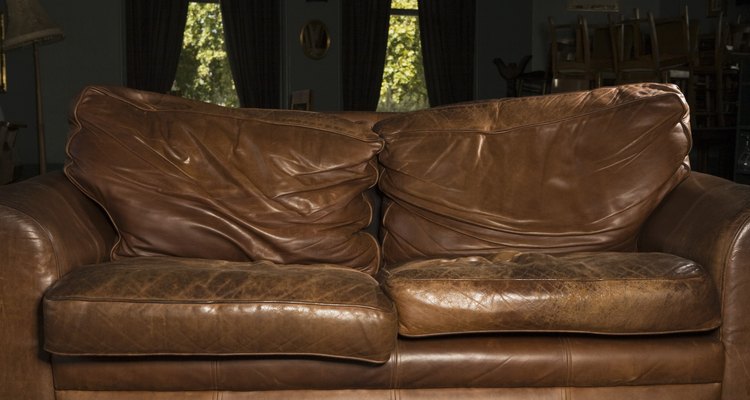
To prolong its life, leather requires upkeep. The material can endure a number of scratches and abrasions during use. You can use sandpaper to buff out these defects before repairing cracks, stains, color imperfections and tears. This process creates a smooth and like-new look for your aging leather.
Sanding Leather
The first step in refinishing leather furniture and other goods is sanding the surface to remove dirt, grime and other buildup. Wet a 600-grit piece of sandpaper and make little circles over the entire surface of the leather piece. Smooth over cracks and other damaged areas, sanding down the small pieces of leather that can become raised during wear. The abrasiveness of the sanding allows the color dye to better seep into the leather.
Refinishing Leather
After sanding down your leather, use a microfiber cloth the wipe away dust and small leather particles. Microfiber prevents any other scratches from forming. The leather is now ready for you to repair cracks and tears with crack filler, which you can obtain from any craft or furniture store. Be sure to follow the directions on the bottle for proper application. Treat stains in the leather and color imperfections during this time.
Second Sanding
Dying stains in the leather brings the material back to full color and gives it a like-new appearance. Use 1,200-grit sandpaper to even out any discoloration between the original color and newly dyed portions. Lightly sand color-treated areas.
Final Steps
You don't need to do any more sanding after treating the color imperfections. Allow newly treated leather to sit unattended for at least two days before using it again. This is called the curing period. Afterward, run a microfiber cloth along the material to create a sheen and remove any remaining residue.
Related Articles

How to Change the Color of Leather

How to Repair a Leather Belt

What Is Cognac Leather?

Naked Leather Vs. Cowhide

How to Beeswax Leather

How to Waterproof a Leather Jacket

How to Use a Suede Eraser

Denatured Alcohol Uses

How to Lacquer Leather

How to Restore Damaged Leather

Getting Dirt Stains Out of Gray Leather ...

How to Clean a Chamois Leather Jacket ...

How to Restore Discolored Boots

How to Get Stretch Marks Out of Leather ...

How to Take Care of Kangaroo Leather

How to Care for Leather With Saddle Soap

How to Dye Rubber Boots

How to Care for Nubuck Leather

Coloring a Faded Leather Jacket

How to Keep Patent Leather From Peeling
References
Photo Credits
Polka Dot Images/Polka Dot/Getty Images